


 2:52:31
2:52:31  2025-01-22
2025-01-22  664
664
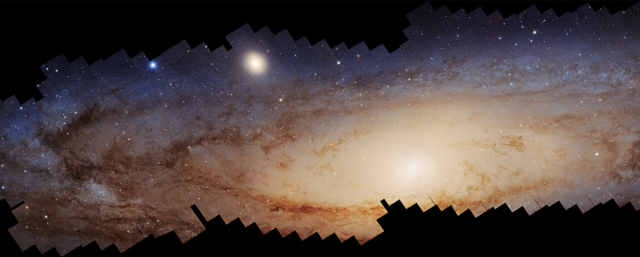
The Andromeda galaxy is our closest galactic neighbour, barring dwarf galaxies that are gravitationally bound to the Milky Way. When conditions are right, we can see it with the naked eye, though it appears as a grey smudge.
It's the furthest object in the Universe that we can see without telescopic help.
The Hubble Space Telescope has created a massive 2.5-gigapixel panorama of Andromeda. It took 10 years and more than 1,000 orbits to capture all of the images.
We're stuck inside the Milky Way and will never escape it. (Yes, there's a tiny possibility we will in some far-off future.) The ESA's powerful Gaia telescope has given us our best look at our own galaxy from inside it, but even it has its limitations.
That's one of the reasons that observing Andromeda, also known as M31, is important. Like the Milky Way, M31 is also a barred spiral. By observing M31 in detail, we can learn more about our own galaxy. M31 is like a proxy for the Milky Way, and astronomers' chief tool for studying our galactic proxy is the Hubble.
"With Hubble we can get into enormous detail about what's happening on a holistic scale across the entire disk of the galaxy. You can't do that with any other large galaxy," said principal investigator Ben Williams of the University of Washington.
The image is a mosaic comprising at least 2.5 billion pixels. It resolves about 200 million individual stars, all of them hotter than our Sun. That's only a small fraction of the galaxy's stellar population, as dim stars like red dwarfs aren't detected.
The image contains bright blue star clusters, background galaxies, foreground stars, satellite galaxies, and dust lanes.
This vast image is the result of two observing programs: the Panchromatic Hubble Andromeda Southern Treasury (PHAST) and the Panchromatic Hubble Andromeda Treasury (PHAT). PHAT and PHAST have made a large contribution to galactic science.
PHAT started acquiring the images for this mosaic about a decade ago, and now we have this new image thanks to both efforts.
New research in the Astrophysical Journal presents the latest results from PHAST, including the new image.
It's titled “PHAST. The panchromatic Hubble Andromeda Southern Treasury. I. Ultraviolet and optical photometry of over 90 million Stars in M31" The lead author is Zhuo Chen from the Department of Astronomy at the University of Washington in Seattle.
Andromeda is not only our nearest neighbour but also the nearest spiral to us and the largest galaxy in the Local Group. Those facts aren't just answers to trivia questions. They explain why astronomers can study the galaxy in detail, including assessing its stellar population, without some of the problems they face observing other galaxies.
"M31 studies circumvent complications from line-of-sight reddening, uncertain distances, and background/foreground confusion," the researchers write in their paper.
"Furthermore, such studies can be put into the context of the surrounding local environment, such as the ISM structure, the star formation rate (SFR), and the metallicity of the stars and gas, and even the larger environment as mapped by the Pan-Andromeda Archeological Survey."
"Thus, M31 provides a unique and interesting comparison to the detailed information we have for our Milky Way," the authors explain.
One of the main takeaways from this massive observing effort is that the southern disk, which hadn't been studied as intently as the northern disk, is fundamentally different from its counterpart.
The southern disk appears to be more disturbed, indicating that it shows the effects of M31's merger history more than the northern disk.
The presence of M32, an early-type dwarf galaxy, hints at some of that merger history.
Astronomers think that M32 could be what's left of a galaxy that merged with Andromeda. Its properties are difficult to explain with our galaxy formation models. It could be the remnant core of a much more massive galaxy that was absorbed by Andromeda about two or three billion years ago.
"Andromeda's a train wreck. It looks like it has been through some kind of event that caused it to form a lot of stars and then just shut down," said study co-author Daniel Weisz at the University of California, Berkeley.
"This was probably due to a collision with another galaxy in the neighborhood."
One strong piece of evidence for that merger is the Giant Southern Stream. It's a tidal debris stream made up of stars in Andromeda's halo that could be a remnant from the ancient merger. The metallicity of its stars is generally lower than the stars in Andromeda's bulge and disk.
The only way to understand Andromeda's history is by surveying its stars. Thanks to PHAT and PHAST, astronomers now know 200 million individual stars.
The observations are limited to stars brighter than the Sun, but the images are still scientifically rich. Together, they hint at a galaxy in transition.
"Andromeda looks like a transitional type of galaxy that's between a star-forming spiral and a sort of elliptical galaxy dominated by aging red stars," said Weisz.
"We can tell it's got this big central bulge of older stars and a star-forming disk that's not as active as you might expect given the galaxy's mass."
"This detailed look at the resolved stars will help us to piece together the galaxy's past merger and interaction history," added PHAST's Principal Investigator Ben Williams.
PHAST, together with PHAT, is a rich resource for astronomers studying Andromeda and, by extension, barred spirals everywhere, including our own Milky Way. However, before long, astronomers will get even better looks at Andromeda.
If all goes well, NASA will launch the Nancy Grace Roman Space Telescope in the near future. It's an infrared telescope with a wide field of view, though it has the same size mirror.
In a single exposure, the Roman can capture the equivalent of 100 high-resolution Hubble images, maybe more. It will help astronomers study the Giant Southern Stream in detail, along with other things, and will provide critical clues to Andromeda's history.
Reality Of Islam |
|
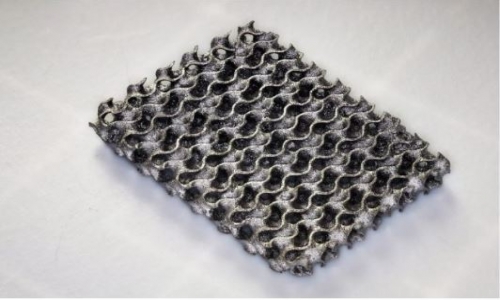
The process
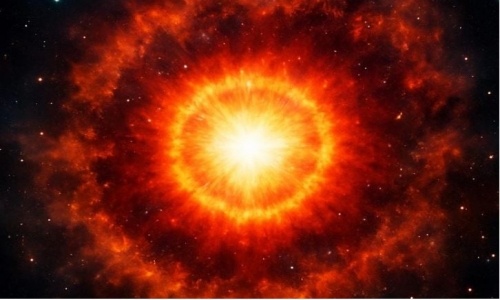
Astronomers
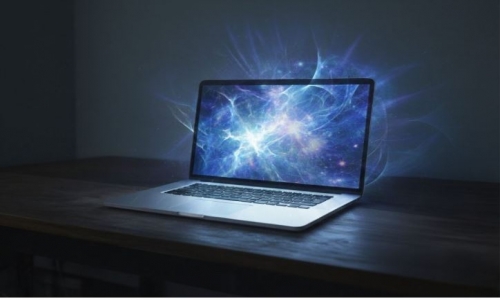
Cosmologist
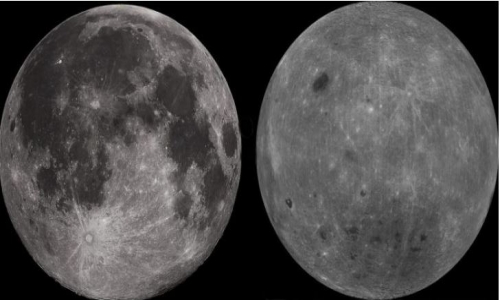
Scientists
 9:3:43
9:3:43
 2018-11-05
2018-11-05
10 benefits of Marriage in Islam
 7:5:22
7:5:22
 2019-04-08
2019-04-08
benefits of reciting surat yunus, hud &
 9:45:7
9:45:7
 2018-12-24
2018-12-24
advantages & disadvantages of divorce
 11:35:12
11:35:12
 2018-06-10
2018-06-10
 6:0:51
6:0:51
 2018-10-16
2018-10-16
 10:47:11
10:47:11
 2022-11-22
2022-11-22
 7:45:39
7:45:39
 2018-06-21
2018-06-21
a hero waters thirsty wild animals
 9:4:9
9:4:9
 2022-01-06
2022-01-06
 3:18:29
3:18:29
 2022-12-24
2022-12-24
 9:30:2
9:30:2
 2021-11-12
2021-11-12
 6:14:17
6:14:17
 2018-06-21
2018-06-21
 5:58:12
5:58:12
 2021-12-18
2021-12-18
 5:41:46
5:41:46
 2023-03-18
2023-03-18
| LATEST |